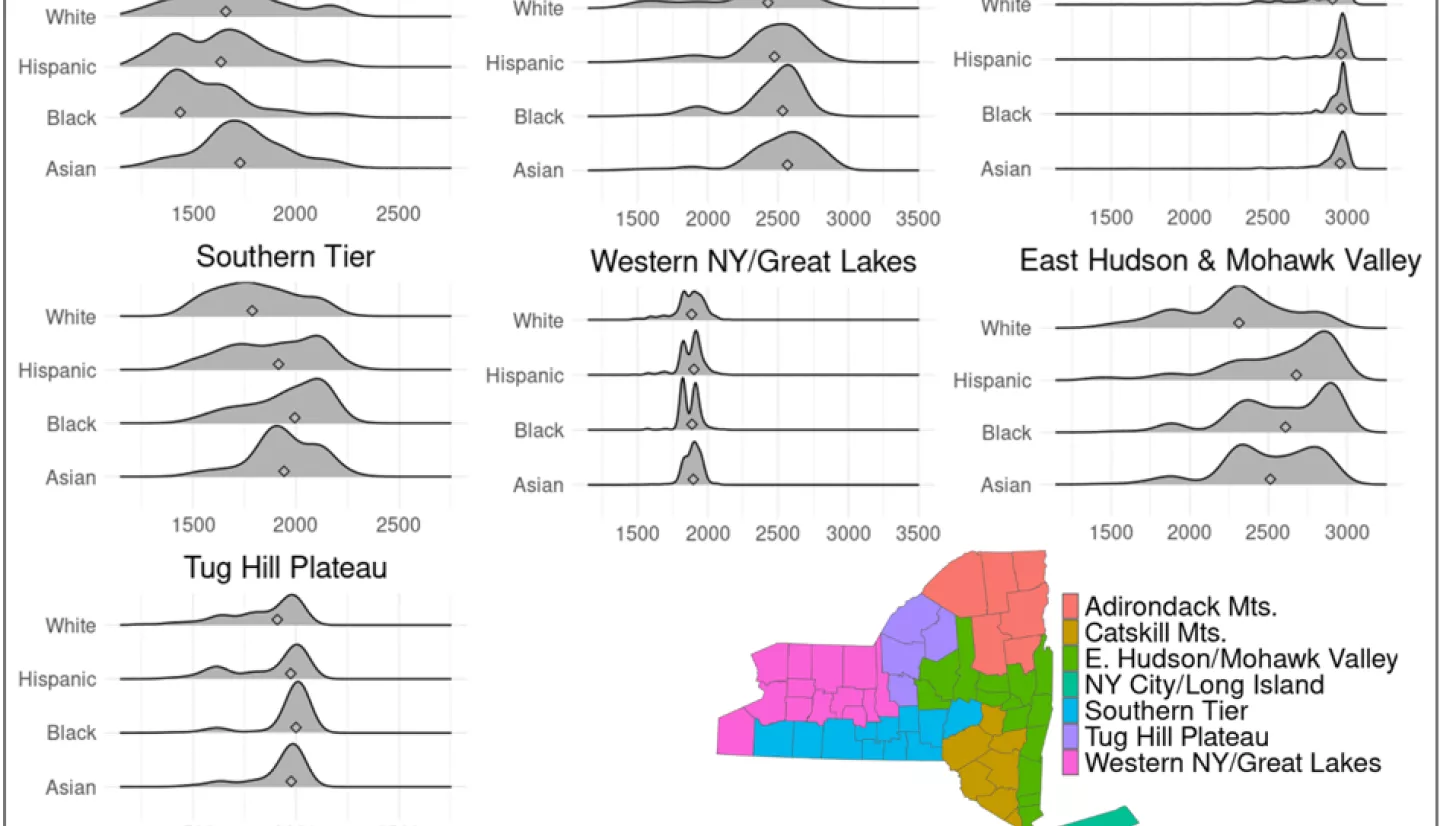Identifying temperature disparities, energy insecurity, and social vulnerability for energy justice in New York State
Team: Daniel Carrión (Yale School of Public Health), Anna Stouffer (Yale School of Public Health), Weixi Wu (Yale School of Public Health/Yale School of the Environment), Ruth Ann Norton (Green & Healthy Homes Initiative), Brendan Brown (Green & Healthy Homes Initiative), Isabel Shargo (Green & Healthy Homes Initiative)
Summary: NASA remote sensing and earth science data are combined with population, demographic, and energy data to create an interactive mapping tool that will serve to identify heat and energy-usage disparities between neighborhoods in New York State. The analysis is based on evidence that shows that increasing temperatures are not experienced evenly across geographies - instead, communities of color experience higher summertime temperatures. Additionally, growing evidence also demonstrates that low income and communities of color are more likely to experience energy insecurity; neighborhoods that are energy insecure may be less likely to use air conditioning, consequently increasing their risk of adverse health outcomes.
Our goal is to use Earth observations to create the Temperature and Energy Justice Mapping (TEJM) tool to inform environmental and energy justice in New York State. The tool, scalable elsewhere, will help stakeholders identify areas experiencing temperature disparities and energy insecurity. Equitable access to weatherization and energy efficiency for low-income communities of color is the mission of organizations like the Green and Healthy Homes Initiative, our community/nonprofit partner. Collaborating with the Green and Healthy Homes Initiative thus provides an opportunity to optimize the TEJM tool for end-users and evaluate its ultimate utility.
